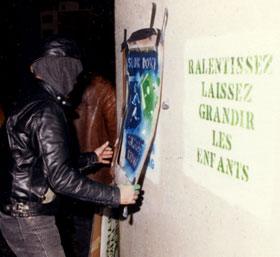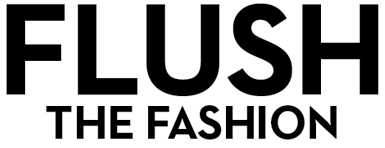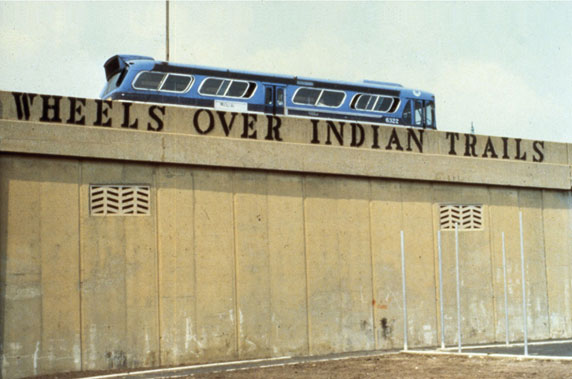Since the late 1960’s New York artist John Fekner has been sharing his artistic talents through a variety of mediums – street art, music, video, sculpture, installations and conceptualist ideas.
A pioneer of street art and stencilling, Fekner’s collaborations with painter and sculptor Don Leicht have been hugely influential to ‘graffiti’ artists worldwide, and can be seen in the work of many of his contemporaries including Invader and Destroy all Design.
While Andy Warhol spent the 70’s turning Art into a business, John Fekner’s work transcended art galleries and ‘hip scenes’, existing in the real world and touching the lives of ‘normal’ people.
His work is as relevant now as it has always been.
Who (or what) would you say has been the biggest influence on your art?
Tennessee Williams. The power of poetry in a single line. A Streetcar Named Desire, Clothes for a Summer Hotel, Cat on a Hot Tin Roof. I actually saw Tennessee Williams perform live in the role of Doc in his play Small Craft Warnings in NYC in 1973. It left a deep impression actually seeing the playwright himself within his own work live on a stage.
What made you want to go out and paint on buildings?
Raging teenage hormones. The first work I did outdoors was the painted phrase Itchycoo Park (a Small Faces record title) on a park house in a city playground that was a hangout for local kids.
 Can you remember how you felt the first time you finished a piece?
Can you remember how you felt the first time you finished a piece?
Painting for the first time in 68 the middle of the night blindly- then hitting the bed filled with anticipation of seeing the piece in the light of the next day. During the Summer of 77 with the Son of Sam killing spree and NY blackout, it was hot and real tense to work outdoors.You had to check your back a lot because people didn’t go out late and cops were real edgy on patrol.
I remember coming back home carrying my black paint bag thinking if a neighbor looking out their window wondered, “What the hell is he up to at 3 o’clock in the morning?”
Were you expecting there to be much of a reaction to your work?
Actually that was never important to me. The work was, and still is, done in the moment. Free abandon is what you gotta strive for to keep it going for yourself and it gets harder with each passing year. If you get in an hour a day doing something you like, consider yourself lucky.
Which of your own pieces have you been most proud of up to now?
Wheels Over Indian Trails (above) done in 1979. I felt America paved over the Native American First People, their sacred grounds and history. The stencil was there for 11 years. Year after year I drove by it and it never got bombed, graffitied or removed by the authorities. I decided to paint over the fading text on Earth Day 1990.
How do you manage to avoid financial pressures without compromising your artistic vision?
Everyone I know is experiencing a difficult financial situation, we’re all in the same boat feeling the impact of this economic crisis. Using cheap paints, b&w prints and found objects are always the way to go in tough times. Writing, paper and pencil can help you get by when you can’t afford buying art materials.
Who is you favourite contemporary artist at the moment?
Laurie Anderson. I think she is amazing and continues to do something new all the time in her performances. And that is a high bar for any artist whether you do studio work, performance art or street art.
How did the collaboration with Don Leicht come about?
It grew out of graduate school together and later at our shared studio at P.S. 1 in Long Island City. Our work dealt with issues facing our kids. We immediately reacted and made an artistic response to the newly-evolving video game culture through our Space Invader projects. We still continue to do new things separately and together.
Is there any new music on the horizon?
Right now there is noisy rebellion in the air. For me, it’s not the time where I can produce musically because I work rather slowly.
 Do you think New York is a better place to live now than the 70’s?
Do you think New York is a better place to live now than the 70’s?
At this moment in time, it’s visually as vibrant and economically as dissatisfying as the 70s. That makes for good art. I think that the combination of a younger generation in neighborhoods like Williamsburg, Bushwick, Astoria and Long Island City paint a new picture that needs to be embraced.
This is a completely new generation that will form their own community with ties to the present, future as well as the past. Life is a continuous moving cycle. Life is all about the circumstances that are directly in front of you.
What are you working on at the moment?
Stencil text scrolls in the studio and kickwriting on the web. It’s great to see the young people finally standing up and take things into their own hands with the #OccupyWallStreet which is now worldwide.
I embrace the lack of definition in this movement which allows time for the ideology to be defined which is a good thing. The hell with sleazy politics, corporate media control, misleading advertisements, and all that. This is the end of pretty.
Finally, where is the best place to eat breakfast in New York?
I never eat breakfast in the city. I only ate there once when I was born at the now defunct French Hospital on West 30th Street.
To see more of John Fekner’s work visit www.johnfekner.com



Pingback: Fra.Biancoshock and John Fekner - Family Portrait - The re:art